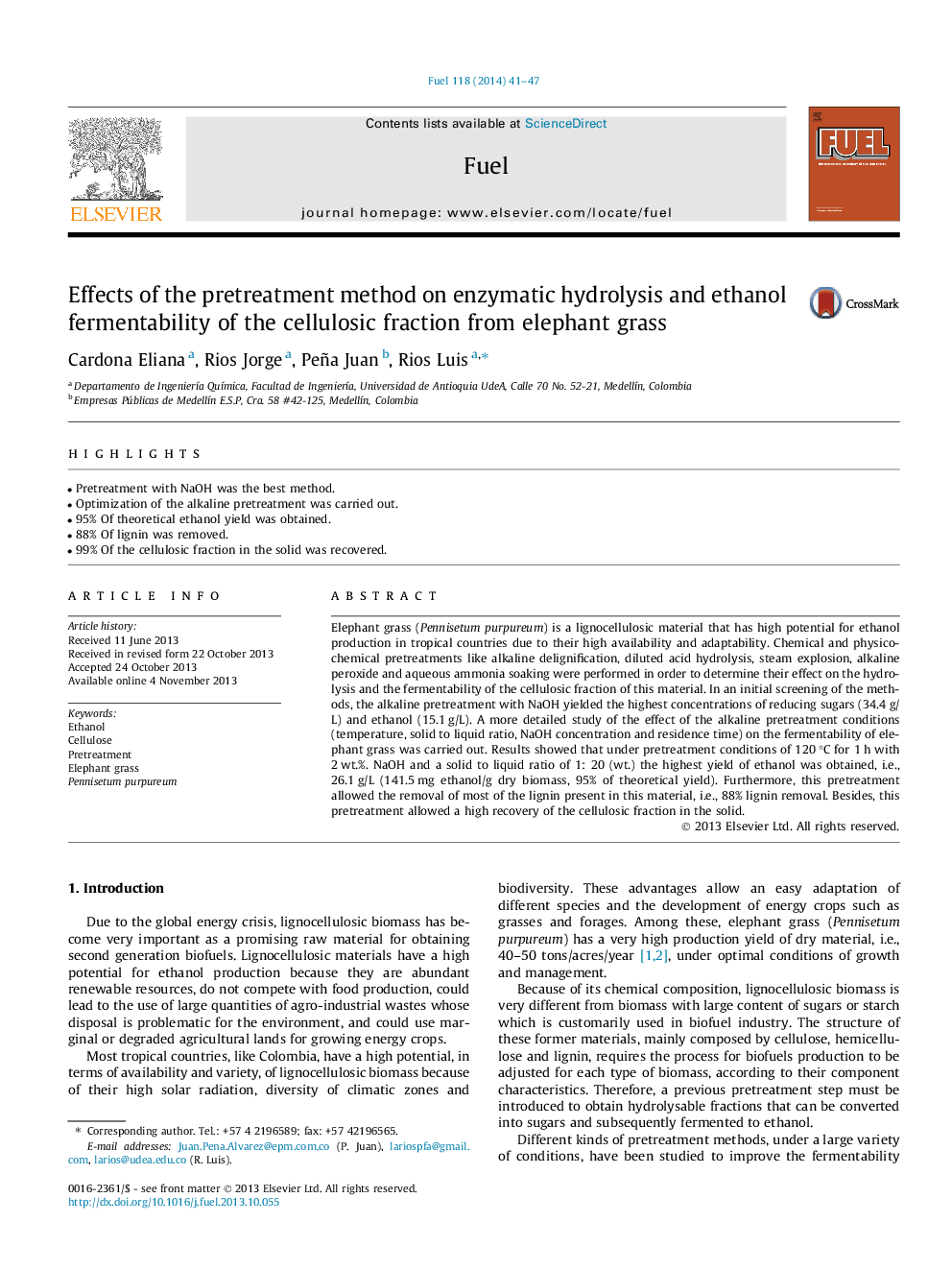| Article ID | Journal | Published Year | Pages | File Type |
|---|---|---|---|---|
| 6638336 | Fuel | 2014 | 7 Pages |
Abstract
Elephant grass (Pennisetum purpureum) is a lignocellulosic material that has high potential for ethanol production in tropical countries due to their high availability and adaptability. Chemical and physicochemical pretreatments like alkaline delignification, diluted acid hydrolysis, steam explosion, alkaline peroxide and aqueous ammonia soaking were performed in order to determine their effect on the hydrolysis and the fermentability of the cellulosic fraction of this material. In an initial screening of the methods, the alkaline pretreatment with NaOH yielded the highest concentrations of reducing sugars (34.4 g/L) and ethanol (15.1 g/L). A more detailed study of the effect of the alkaline pretreatment conditions (temperature, solid to liquid ratio, NaOH concentration and residence time) on the fermentability of elephant grass was carried out. Results showed that under pretreatment conditions of 120 °C for 1 h with 2 wt.%. NaOH and a solid to liquid ratio of 1: 20 (wt.) the highest yield of ethanol was obtained, i.e., 26.1 g/L (141.5 mg ethanol/g dry biomass, 95% of theoretical yield). Furthermore, this pretreatment allowed the removal of most of the lignin present in this material, i.e., 88% lignin removal. Besides, this pretreatment allowed a high recovery of the cellulosic fraction in the solid.
Related Topics
Physical Sciences and Engineering
Chemical Engineering
Chemical Engineering (General)
Authors
Cardona Eliana, Rios Jorge, Peña Juan, Rios Luis,
